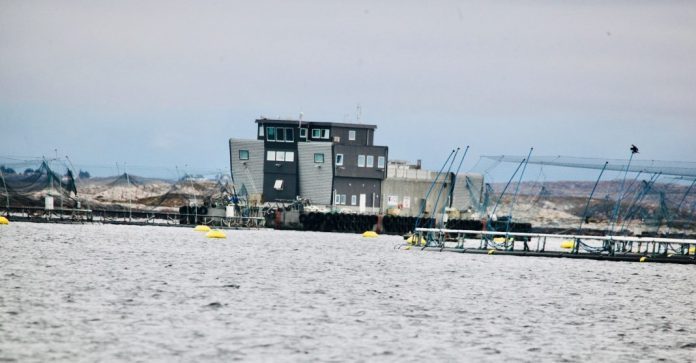Salmon farmer delivered an operating profit (EBIT) of EUR 40.6 million in the fourth quarter of 2020.
“2020 has been a challenging year, characterised by significant uncertainty for the aquaculture industry. This uncertainty was also evident in the fourth quarter. At the start of the year, few people would have dared to hope that we would post a 2020 operational result that was as good as the year before. Nevertheless, through a strategic and operational focus, as well as employees who have demonstrated a formidable ability to adapt to new working practices, we have done just that,” said CEO Gustav Witzøe in a stock exchange statement.
The harvest volume for the quarter ended at 43,600 tonnes, compared to 40,300 tonnes in the same period the year before. Operating profit (EBIT) per kilo was EUR 0.9 in the fourth quarter, down from EUR 1.6 in the fourth quarter of 2019. The decrease in operating profit per kilo was mainly due to the fact that the average salmon price was 25 per-cent lower in the fourth quarter of 2020, compared to the corresponding period the year before.
Additions
“Fish Farming Central Norway once again posted a solid result, and reaped the rewards of sound operations and a good biological performance. The autumn-2019 generation accounted for the entire volume harvested during the period. In the first quarter 2021, the segment will finish harvesting the autumn-2019 generation and start harvesting the spring-2020 generation. The biological performance of both generations has recently proved to be good. In the year’s first quarter, costs are expected to remain at similar levels, while the volume harvested will be slightly lower than in the quarter before. SalMar expects Fish Farming Central Norway to harvest 107,000 tonnes of salmon in 2021,” SalMar wrote.
Fish Farming Northern Norway continued its positive trend and posted
satisfactory results in the fourth quarter of 2020. 80 per-cent of the volume harvested derived from fish transferred to sea farms in the spring of 2019, a generation that has had strong biological performance and contributed to lower costs at harvest. SalMar started harvesting the autumn-2019 generation in the fourth quarter of 2020, and will continue doing so in the first quarter of 2021.
This generation has also demonstrated a good biological performance. In the first quarter of 2021, the segment expects slightly higher costs and a substantially lower harvested volume compared with the quarter before.
Loss in Iceland
For the Sales and Processing segment, the fourth quarter was characterised by a high degree of uncertainty in the market as a result of the Covid-19 pandemic. Nevertheless, the segment posted a satisfactory Operational EBIT of EUR 7 million in the period. For 2020 as a whole, the segment posted a strong performance with an operational EBIT of EUR 28 million, up from EUR 12.4 million the year before.
2020 proved to be a difficult year for Icelandic Salmon, which experienced
substantial challenges at the start of the year. The company started harvesting the 2019-generation in the fourth quarter of 2020. These fish have a substantially lower cost at harvest. Nevertheless, low price achievement led to an operating loss in the period. The company is drawing on the lessons learned in the year now past, and said it is optimistic with respect to 2021, a year in which the biological status of the fish held at its sea farms is significantly better.
SalMar maintains its expectations for total harvest volume of 163,000 tonnes in Norway, and 14,000 tonnes in Iceland in 2021.
In January 2021, the application for the world’s first fish farm in the open ocean, Smart Fish Farm, was submitted to Norway’s Directorate of Fisheries. Establishing salmon farming in the open sea is an important part of SalMar’s strategy to ensure sustainable growth.
Secured green funding
To strengthen financial flexibility and further strengthen the company’s focus on sustainability, SalMar has at the beginning of 2021 refinanced its existing credit facilities. The company has increased its overdraft facility and at the same time entered into an agreement on a new sustainability linked credit facility, an agreement that has four ESG KPI’s linked to it.
“Through the new facilities, we strengthen our financial flexibility and at the same time strengthen our focus on sustainability. The agreement focuses on four of our most important KPIs where all of them pulls us in an even more sustainable direction,” said CFO & COO Trine Sæther Romuld.
The Board of Directors is set to pay out NOK 20 per share in dividends for the 2020 financial year.


